Big City, Big Challenges
University of Miami College of Arts & Sciences researchers are finding solutions to urban challenges both locally and abroad

Increasingly, cities have become bigger and more complex all over the world. According to the United Nations, in 2050, 66 percent of the world’s population will reside in urban areas, adding almost 2.5 billion people to the world’s fastest growing urban populations in Asia and Africa. As a city’s population expands, so do the amounts of natural resources used and the services needed to meet increased demands; in turn, inequalities become more evident.
How do we sustain rapid urban development? How do we serve larger populations? How do we predict crises and pressure points within cities? These are some of the big questions and problems that many cities, including Miami, are facing today.
From studying patterns of crime in a metropolis to the geographic mapping of urban areas, several researchers at the College are tackling these issues in their variety and complexity, and finding solutions to today’s urban challenges.
“People in the margins of society, those who use illegal drugs, or live in substandard housing, often escape the attention of participants in the larger society, especially if they live in the nooks and crannies of the big city. In the bubble of indifference or aversion that surrounds them, marginalized people may engage in behaviors that affect the larger society, or they may be suspected of having an effect. As a medical anthropologist who focuses on marginalized people, I attempt to sort out the facts from the myths about marginalized people in the big city.”
- J. Bryan Page, Ph.D., Director, International Studies, Professor, Anthropology
"To the surprise of many, Miami has become a global city, attracting financial flows, tourists, and migrants, not only from the Americas but the world over. The subject of my current research is two-fold: First, to understand how this happened. That is, how a minority-majority city managed to displace others as the focus of economic and social flows between Europe, the U.S., and the Americas; second, to assess how the growing diversity of Greater Miami's population and its relentlessly increasing economic inequality will bear on its future.”
- Alejandro Portes, Ph.D., Research Professor, Sociology
“Geography students receive training in how to map changes in the urban environment. In my remote sensing course, students learn how to transform the satellite images into digital land cover maps that display green space, built-up areas (roads, buildings, construction sites), and water bodies. Using repetitive imagery from high-resolution satellites, such as those in Google Earth, the students can measure the extent of major campus transformations associated with capital projects such as the BankUnited Center (completed in 2002), and the Donna E. Shalala Student Center (2013).”
- Douglas O. Fuller, Ph.D., Professor, Geography and Regional Studies
“My research examines the complexity of cities and networks in Accra, Ghana. I study e-waste dumping concentrated in slums that specialize in dismantling, reusing and repurposing, and extracting valuable fractions from waste, e.g. copper. Valuable fractions, in turn, get exported to China and India for reincorporation into new manufacturing processes.”
- Richard Grant, Ph.D., Director, Urban Studies, Professor, Regional Studies
“My research and teaching interests center on the history of urban planning and design, as well as their implications for present-day practice. My current projects include MAP: Miami Affordability Project, an online mapping tool to visualize the affordable housing landscape in Miami, as well as community development and historic preservation projects in Overtown, Allapattah, and Liberty City.”
- Robin Bachin, Ph.D., Associate Professor, History
“I completed a study of Miami’s Jewish community in 2015 for the Greater Miami Jewish Federation. One of the interesting findings was that the Jewish population of downtown Miami (from Brickell to Midtown) had tripled in the past decade. The increase is comprised mostly of young singles and young couples with preschool age children.”
- Ira Sheskin, Ph.D., Chair, Geography and Regional Studies
“Professor Elvira Maria Restrepo in Geography and I are collaborating on looking at patterns of crime in cities; she is the lead researcher. We look at where events occur, the territory of the gangs, and most importantly their composition and impact on other city life. We are interested in Miami (Professor Restrepo is a member of the Miami Task Force on gangs with local police), and also comparing the behavior to the huge sprawling cities in Latin America, e.g. Bogota in Colombia.”
- Neil Johnson, Ph.D., Professor, Physics
“In our Science Made Sensible (SMS) Program, 12 advanced undergraduates majoring in science serve as 'resident scientists' in Miami middle and high school classrooms. Each undergraduate develops hands-on activities with a teacher partner. SMS is a multi-generational model with six graduate students earning Ph.D.’s in the sciences, who in turn, mentor two undergraduates.”
- Michael Gaines, Ph.D., Professor, Biology
“My focus is on the ecological infrastructures that megacities need to improve their resilience to climate change. Usually, decision-makers think that technological solutions will fix everything, but that is not correct. Recent water scarcity in several megacities demonstrates that megacities need well-managed natural areas providing the essential ecosystem services (e.g., freshwater, protection against natural hazards, etc.).”
- José Maria Cardoso da Silva, Ph.D., Professor, Geography and Regional Studies
Other Notable A&S Professors Conducting Research in Urban Development:
Jafari S. Allen, Ph.D., Associate Professor, Anthropology
Donette Francis, Ph.D., Associate Professor, English
Tarell Alvin McCraney, Professor, Theatre Arts
Jonathan West, Ph.D., Professor, Director, Political Sciences
Dilip Sarkar, Ph.D., Associate Professor, Computer Science
Donald Spivey, Ph.D., Professor, History
March 29, 2016





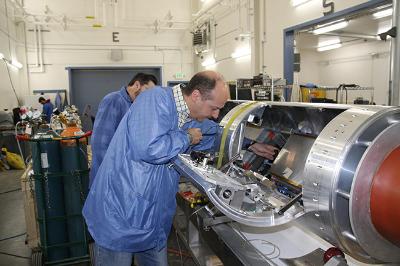


 How are the humanities perceived in society today and how does the news media portray these perceptions?
How are the humanities perceived in society today and how does the news media portray these perceptions? Lindsay Thomas, English Department
Lindsay Thomas, English Department
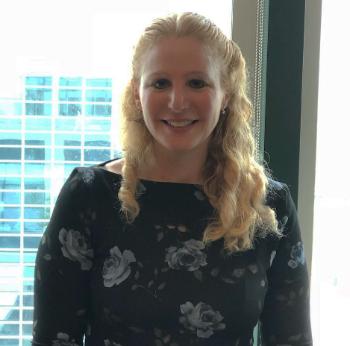
 Dr. Graf (center) with international excavation team in Petra, Jordan
Dr. Graf (center) with international excavation team in Petra, Jordan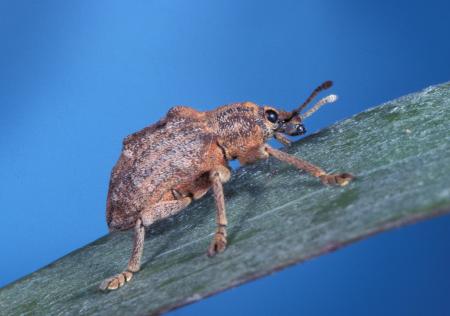 The melaleuca weevil is only 6 to 9 mm in length.
The melaleuca weevil is only 6 to 9 mm in length.

 In Losin’s lab, she simulates clinician-patient interactions to uncover the social and cultural factors that influence the pain that patients experience during medical care. Her goal is to try and find ways to help people feel less pain when seeing the doctor and help reduce phobias about doctor visits and check-ups.
In Losin’s lab, she simulates clinician-patient interactions to uncover the social and cultural factors that influence the pain that patients experience during medical care. Her goal is to try and find ways to help people feel less pain when seeing the doctor and help reduce phobias about doctor visits and check-ups. Dr. Simpson studies infants' social behavior in her lab.
Dr. Simpson studies infants' social behavior in her lab.
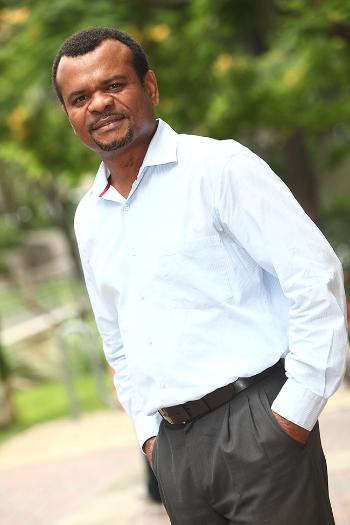
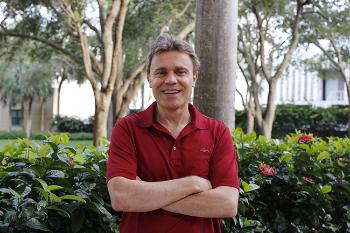
 “I selected this particular species for my research because their duets are very complex,” said Rivera-Cáceres. “The birds need to be in sync, so when one bird sings the other remains silent, and they do this in a very fast tempo while avoiding any overlap.”
“I selected this particular species for my research because their duets are very complex,” said Rivera-Cáceres. “The birds need to be in sync, so when one bird sings the other remains silent, and they do this in a very fast tempo while avoiding any overlap.”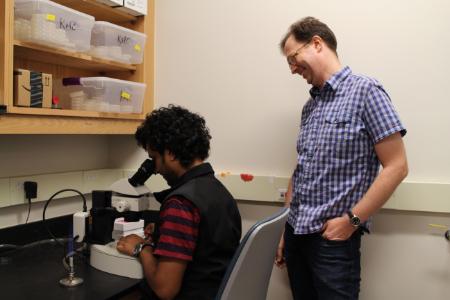



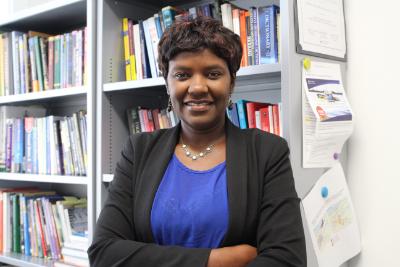
 “We know that early social experiences in the classroom impact later development and learning,” said Dr. Daniel Messinger, a psychology professor in the College of Arts and Sciences. “Yet, we really don’t know how those social networks form. The whole point of this project is to learn what kids are doing moment-to-moment, hour-to-hour, month-to-month, and year-to-year in the classroom.”
“We know that early social experiences in the classroom impact later development and learning,” said Dr. Daniel Messinger, a psychology professor in the College of Arts and Sciences. “Yet, we really don’t know how those social networks form. The whole point of this project is to learn what kids are doing moment-to-moment, hour-to-hour, month-to-month, and year-to-year in the classroom.”
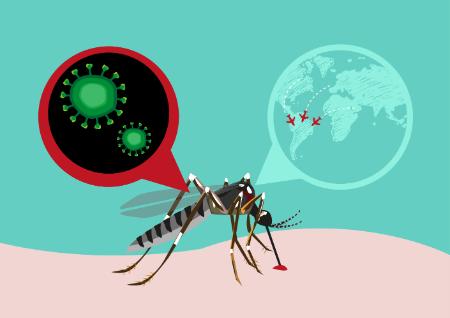 Manrique goes on to explain that the contagion process that the team studied covers a spectrum of phenomena, from viruses like Zika to extreme political ideas discussed in online chat rooms that then lead to outbreaks of violent civil disorder.
Manrique goes on to explain that the contagion process that the team studied covers a spectrum of phenomena, from viruses like Zika to extreme political ideas discussed in online chat rooms that then lead to outbreaks of violent civil disorder.

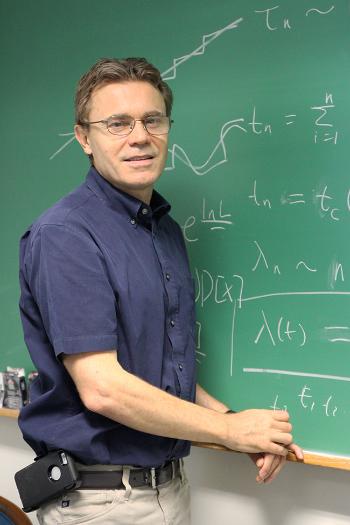
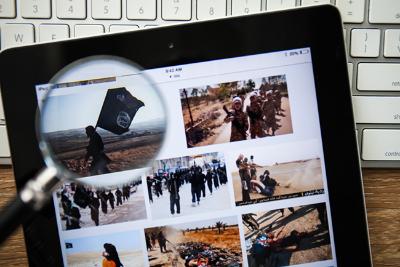
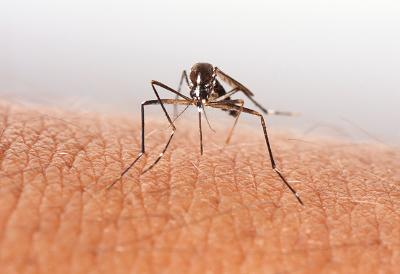 Few would question Rutherford's action, but what remains unclear is how much of a role sexual transmission plays in the spread and control of Zika. Now, in a first-of-its-kind study, a University of Miami researcher and others have created a mathematical model in an attempt to answer that very question.
Few would question Rutherford's action, but what remains unclear is how much of a role sexual transmission plays in the spread and control of Zika. Now, in a first-of-its-kind study, a University of Miami researcher and others have created a mathematical model in an attempt to answer that very question.

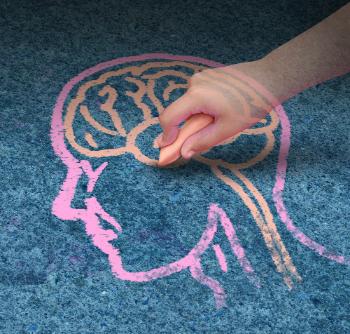 Devon Gangi, who received her Ph.D. working with UM College of Arts & Sciences Psychology Professor Dr. Daniel Messinger, is a co-author of the study and now a postdoctoral fellow at the MIND Institute at the University of California, Davis. She explains, “Joint attention is especially relevant for the development of children with autism and high-risk siblings.”
Devon Gangi, who received her Ph.D. working with UM College of Arts & Sciences Psychology Professor Dr. Daniel Messinger, is a co-author of the study and now a postdoctoral fellow at the MIND Institute at the University of California, Davis. She explains, “Joint attention is especially relevant for the development of children with autism and high-risk siblings.”

 Functional connections in the brain change over time in ways that are only now beginning to be appreciated. In the field of neuroscience, there is a new approach to studying the brain known as human connectomics. This dynamic model of studying the brain and its moment-to-moment variations is what researchers at the University of Miami (UM) College of Arts & Sciences Department of Psychology present in a new study published in the journal
Functional connections in the brain change over time in ways that are only now beginning to be appreciated. In the field of neuroscience, there is a new approach to studying the brain known as human connectomics. This dynamic model of studying the brain and its moment-to-moment variations is what researchers at the University of Miami (UM) College of Arts & Sciences Department of Psychology present in a new study published in the journal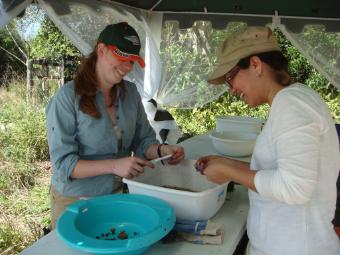 Dr. Ardren says Everglades restoration models used by scientists and government entities do not take human factors into account, specifically prehistoric human occupation.
Dr. Ardren says Everglades restoration models used by scientists and government entities do not take human factors into account, specifically prehistoric human occupation.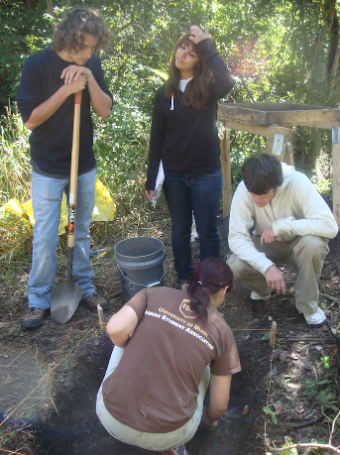 Dr. Ardren says the main point of her research is to contribute quantifiable data on the human influence in tree island formation, which is a major factor ignored in most Everglades restoration research and models. She hopes her research will generate discussion among scientists today who are working on Everglades restoration in many disciplines with the outcome to collaborate and take into account the human impact on the landscape, not just in the 21st-century but thousands of years into the past.
Dr. Ardren says the main point of her research is to contribute quantifiable data on the human influence in tree island formation, which is a major factor ignored in most Everglades restoration research and models. She hopes her research will generate discussion among scientists today who are working on Everglades restoration in many disciplines with the outcome to collaborate and take into account the human impact on the landscape, not just in the 21st-century but thousands of years into the past.
 Previous work on group dynamics in physics has tended to focus on studying the collective behavior of identical bodies. Dr. Johnson’s latest research highlights the importance of unique “personalities” or traits for understanding how disparate parts come together to be one complementary whole, for example, a soccer team.
Previous work on group dynamics in physics has tended to focus on studying the collective behavior of identical bodies. Dr. Johnson’s latest research highlights the importance of unique “personalities” or traits for understanding how disparate parts come together to be one complementary whole, for example, a soccer team.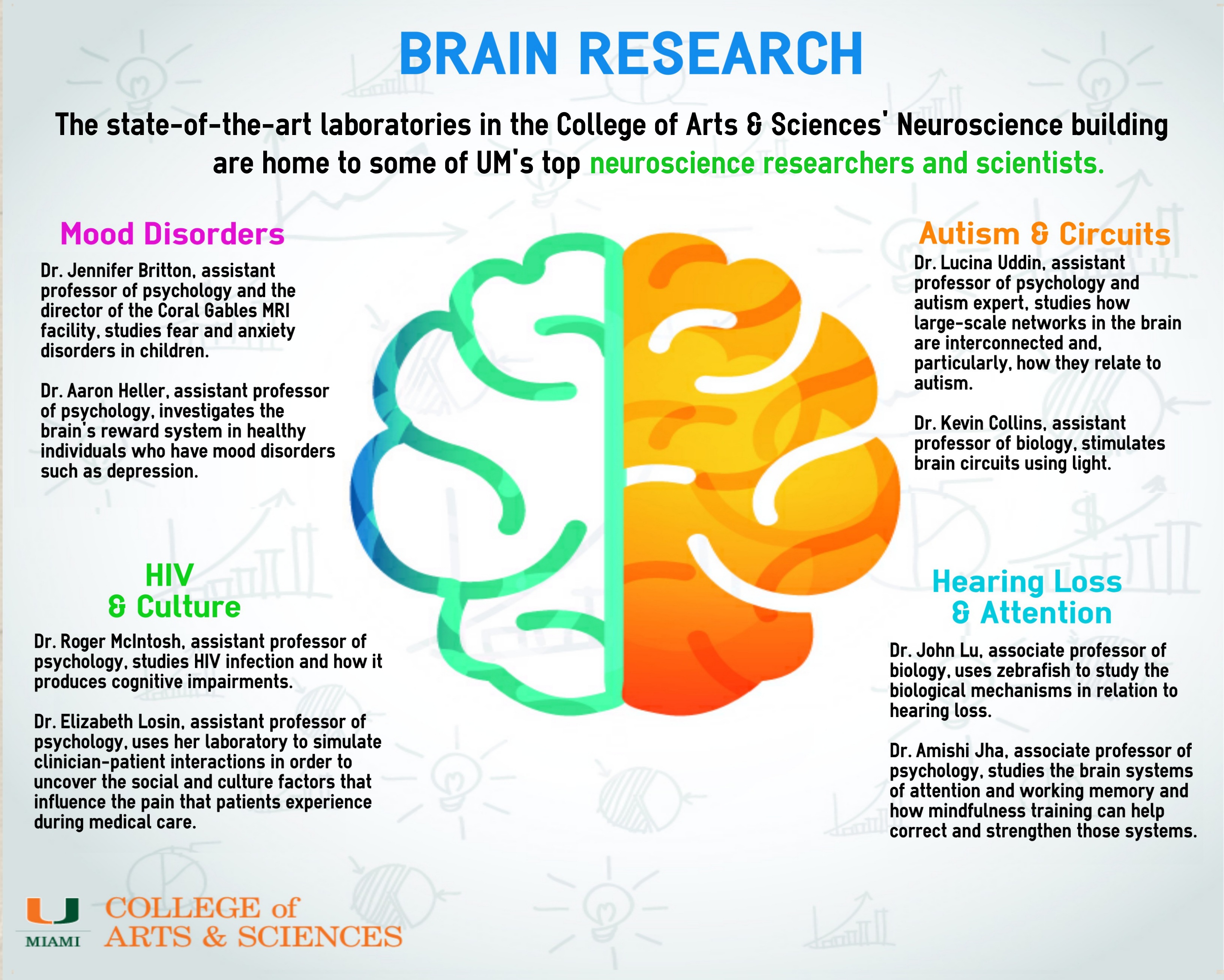

 This secondary analysis, published online and in the November 2015 issue of
This secondary analysis, published online and in the November 2015 issue of Imagine you travel in a hot air balloon above the University of Miami Coral Gables campus. You float above Lake Osceola, the Donna E. Shalala Student Center, the Foote Green, the Richter Library, the Rock, the Lowe Art Museum, the Newman Alumni Center, the residential halls, and the Bill Cosford Cinema. What kind of activity would you see from above? What type of data can you collect about how the University works from just watching people move around the campus on any given day? Is there a pattern in the data, and how can that “big data” help you understand the everyday life of the University?
Imagine you travel in a hot air balloon above the University of Miami Coral Gables campus. You float above Lake Osceola, the Donna E. Shalala Student Center, the Foote Green, the Richter Library, the Rock, the Lowe Art Museum, the Newman Alumni Center, the residential halls, and the Bill Cosford Cinema. What kind of activity would you see from above? What type of data can you collect about how the University works from just watching people move around the campus on any given day? Is there a pattern in the data, and how can that “big data” help you understand the everyday life of the University? As a result of the cluster hire, the College welcomed new faculty members Dr. Chaoming Song in the Department of Physics, Dr. Stefan Wuchty in the Department of Computer Science, and Dr. J. David Van Dyken in the Department of Biology, along with Dr. Elvira Maria Restrepo who joined the Department of Geography and Regional Studies and studies complexity science as it relates to conflicts.
As a result of the cluster hire, the College welcomed new faculty members Dr. Chaoming Song in the Department of Physics, Dr. Stefan Wuchty in the Department of Computer Science, and Dr. J. David Van Dyken in the Department of Biology, along with Dr. Elvira Maria Restrepo who joined the Department of Geography and Regional Studies and studies complexity science as it relates to conflicts. 
 Schizophrenia is a chronic, severe, and disabling psychiatric disorder that affects about one percent of the population in the United States. Approximately 60 percent of those suffering from this condition live with a relative. Despite the fact that that family interventions have shown to significantly improve outcomes for individuals with schizophrenia, only about seven percent of patients with this illness receive any family therapy.
Schizophrenia is a chronic, severe, and disabling psychiatric disorder that affects about one percent of the population in the United States. Approximately 60 percent of those suffering from this condition live with a relative. Despite the fact that that family interventions have shown to significantly improve outcomes for individuals with schizophrenia, only about seven percent of patients with this illness receive any family therapy.
 How some brains produce synesthesia and how synesthetic brains differ from those of non-synesthetic brains were questions addressed by keynote speaker Anina Rich, professor and Co-Director of the Perception in Action Research Centre at Macquarie University, Australia, and Dr. Laura Speed, researcher at the Center for Language Studies at Radboud University, Netherlands.
How some brains produce synesthesia and how synesthetic brains differ from those of non-synesthetic brains were questions addressed by keynote speaker Anina Rich, professor and Co-Director of the Perception in Action Research Centre at Macquarie University, Australia, and Dr. Laura Speed, researcher at the Center for Language Studies at Radboud University, Netherlands.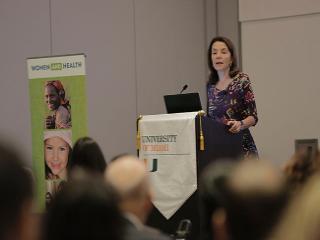 “The paper was the result of the work of 15 dedicated Commissioners that included academics, policymakers, program implementers and advocates – all of them related to this broad, comprehensive construct of women’s health from different perspectives,” said Dr. Langer. The purpose of the report, according to Dr. Langer, is to hopefully influence policy agenda on issues related to women and health.
“The paper was the result of the work of 15 dedicated Commissioners that included academics, policymakers, program implementers and advocates – all of them related to this broad, comprehensive construct of women’s health from different perspectives,” said Dr. Langer. The purpose of the report, according to Dr. Langer, is to hopefully influence policy agenda on issues related to women and health. University of Miami President Julio Frenk (center) photographed here with - left to right - Dean of the College of Arts & Sciences Leonidas Bachas; Professor Merike Blofield, Director of the Women's and Gender Studies Program; Dr. Ana Langer, Chair of the Lancet Commission on Women and Health; Dr. Felicia Knaul, Director of the College's Miami Institute of the Americas; Dean Nilda (Nena) Peragallo, School of Nursing & Health Studies; and Dean Isaac Prilleltensky, School of Education & Human Development, at today's panel discussion on the Lancet Commission study.
University of Miami President Julio Frenk (center) photographed here with - left to right - Dean of the College of Arts & Sciences Leonidas Bachas; Professor Merike Blofield, Director of the Women's and Gender Studies Program; Dr. Ana Langer, Chair of the Lancet Commission on Women and Health; Dr. Felicia Knaul, Director of the College's Miami Institute of the Americas; Dean Nilda (Nena) Peragallo, School of Nursing & Health Studies; and Dean Isaac Prilleltensky, School of Education & Human Development, at today's panel discussion on the Lancet Commission study.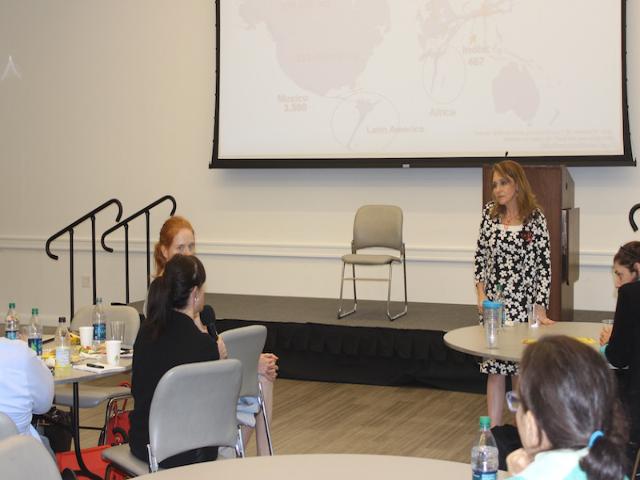 “Very few women should die at childbirth if they have access to even the most basic of health care technologies,” said Dr. Knaul. “The message here is that it doesn’t make any sense, either ethically or as an economist, to invest in saving a woman the day that she gives birth but then allowing her to die a few years later of a preventable cervical cancer, a treatable breast cancer or a manageable case of a disease like diabetes – it just isn’t right, but it’s also not the sensibly right thing to do.”
“Very few women should die at childbirth if they have access to even the most basic of health care technologies,” said Dr. Knaul. “The message here is that it doesn’t make any sense, either ethically or as an economist, to invest in saving a woman the day that she gives birth but then allowing her to die a few years later of a preventable cervical cancer, a treatable breast cancer or a manageable case of a disease like diabetes – it just isn’t right, but it’s also not the sensibly right thing to do.” Researchers detail their findings in an innovative study that combines developmental psychology, computer science, and robotics—an approach that has never been tried before, to the best of the researchers’ knowledge.
Researchers detail their findings in an innovative study that combines developmental psychology, computer science, and robotics—an approach that has never been tried before, to the best of the researchers’ knowledge. “Our findings suggest that the universe was ‘cooked’ at just the right speeds,” said
“Our findings suggest that the universe was ‘cooked’ at just the right speeds,” said Coral Gables, Fla. (September 3, 2015) – Cognitive flexibility is the ability to shift our thoughts and adapt our behavior to the changing environment. In other words, it’s one’s ability to disengage from a previous task and respond effectively to a new one. It’s a faculty that most of us take for granted, yet an essential skill to navigate life.
Coral Gables, Fla. (September 3, 2015) – Cognitive flexibility is the ability to shift our thoughts and adapt our behavior to the changing environment. In other words, it’s one’s ability to disengage from a previous task and respond effectively to a new one. It’s a faculty that most of us take for granted, yet an essential skill to navigate life.
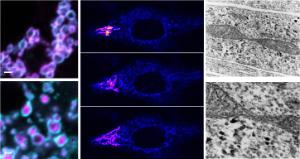

 There are more boys than girls diagnosed with autism spectrum disorder (ASD). Now, a study led by a University of Miami (UM) researcher shows that behaviors relevant to autism are more frequently observed in boys than in girls, whether they’re at risk of autism or not.
There are more boys than girls diagnosed with autism spectrum disorder (ASD). Now, a study led by a University of Miami (UM) researcher shows that behaviors relevant to autism are more frequently observed in boys than in girls, whether they’re at risk of autism or not.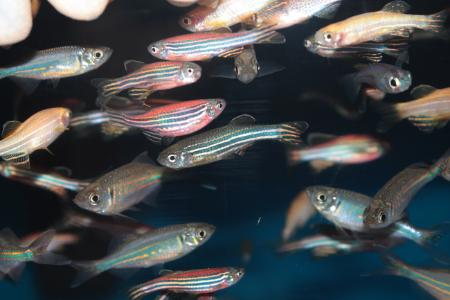 Now, researchers are utilizing animal models to understand how dysfunction of either of two genes associated with ASD,
Now, researchers are utilizing animal models to understand how dysfunction of either of two genes associated with ASD, At the turn of the century, 240 women with a recent breast cancer diagnosis participated in a randomized trial that tested the effects of a stress management intervention developed by
At the turn of the century, 240 women with a recent breast cancer diagnosis participated in a randomized trial that tested the effects of a stress management intervention developed by
 “The over-prescribing of anti-malarials puts evolutionary pressure on the malaria parasite that risks hastening its resistance to artemisinin-based combination therapy--the frontline drugs used to treat malaria in Africa,” Stoler said. “Such resistance is already spreading across Southeast Asia.”
“The over-prescribing of anti-malarials puts evolutionary pressure on the malaria parasite that risks hastening its resistance to artemisinin-based combination therapy--the frontline drugs used to treat malaria in Africa,” Stoler said. “Such resistance is already spreading across Southeast Asia.” 
 An interesting question, one that linguists have long debated, is whether climate and geography affect language. The challenge has been to untangle the factors that cause sounds to change.
An interesting question, one that linguists have long debated, is whether climate and geography affect language. The challenge has been to untangle the factors that cause sounds to change.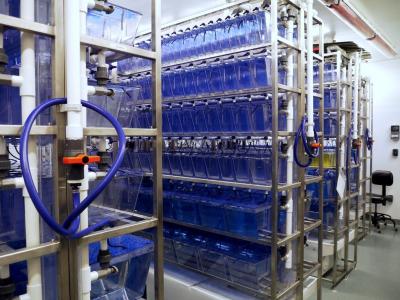 Eight leading scientists presented their work with zebrafish during the event. Participants also had a chance to attend a poster session where undergraduate and graduate students working with these distinguished faculty members shared their work. Fourteen projects showed the promise of future research using zebrafish, such as identifying genes that cause hereditary deafness in humans.
Eight leading scientists presented their work with zebrafish during the event. Participants also had a chance to attend a poster session where undergraduate and graduate students working with these distinguished faculty members shared their work. Fourteen projects showed the promise of future research using zebrafish, such as identifying genes that cause hereditary deafness in humans. The modeling of communicative behavior and related genetic markers in infant and mother will increase understanding of pathways to healthy cognitive and socio-emotional development, and shed light on the potential for change in early intervention efforts.
The modeling of communicative behavior and related genetic markers in infant and mother will increase understanding of pathways to healthy cognitive and socio-emotional development, and shed light on the potential for change in early intervention efforts.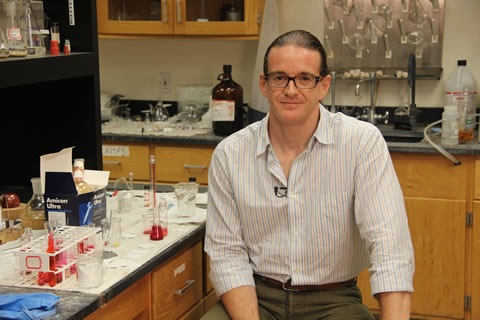

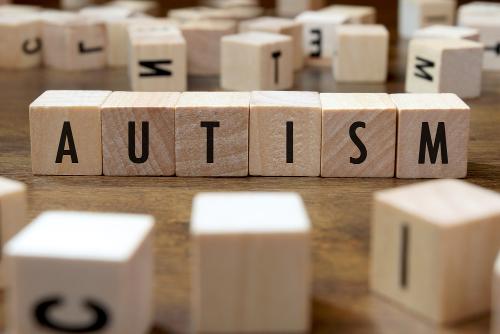
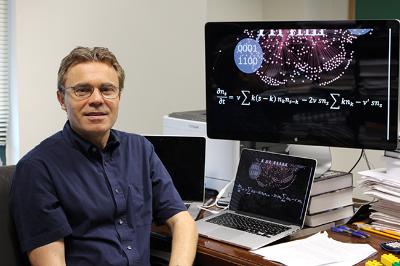
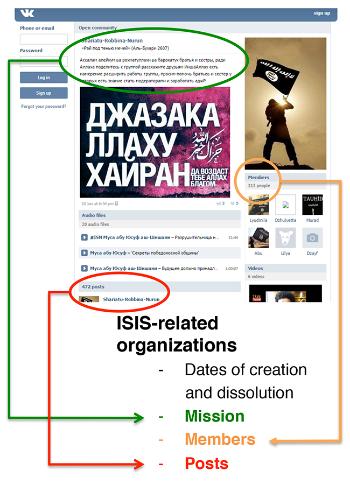

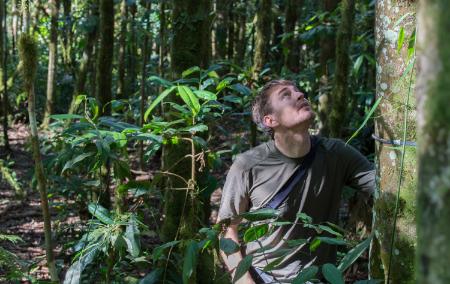
 Mindfulness involves focusing attention on present-moment experiences and observing one's thoughts and feelings without emotional reactivity or judgment.
Mindfulness involves focusing attention on present-moment experiences and observing one's thoughts and feelings without emotional reactivity or judgment.
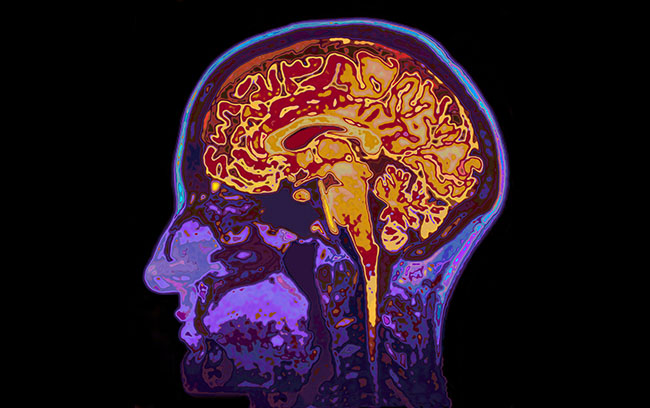
 But before the letter appeared on the screen, an image would pop up to the right, and—this is where it gets interesting—the images were quite sensual and erotic. Not surprisingly, participants’ eyes definitely wandered to the right for a quick peek, which was captured by eye-tracking equipment.
But before the letter appeared on the screen, an image would pop up to the right, and—this is where it gets interesting—the images were quite sensual and erotic. Not surprisingly, participants’ eyes definitely wandered to the right for a quick peek, which was captured by eye-tracking equipment.




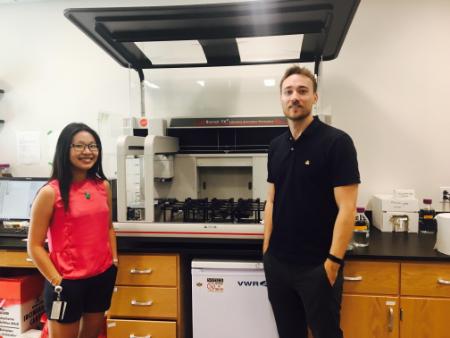
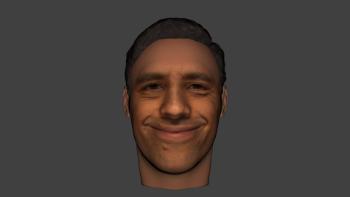
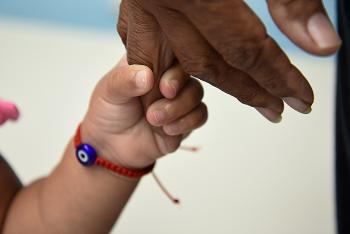 “For two decades, the Linda Ray Intervention Center, a research program in the Department of Psychology, has focused on the developmental needs of vulnerable children ages 0 to 3 who are compromised by child maltreatment and maternal substance abuse,” said Director Lynne Katz, who is also a research associate professor at UM. “Critical to that research is understanding the communication experiences in the classroom between children and their teachers, as well as peer-to-peer interactions.”
“For two decades, the Linda Ray Intervention Center, a research program in the Department of Psychology, has focused on the developmental needs of vulnerable children ages 0 to 3 who are compromised by child maltreatment and maternal substance abuse,” said Director Lynne Katz, who is also a research associate professor at UM. “Critical to that research is understanding the communication experiences in the classroom between children and their teachers, as well as peer-to-peer interactions.”